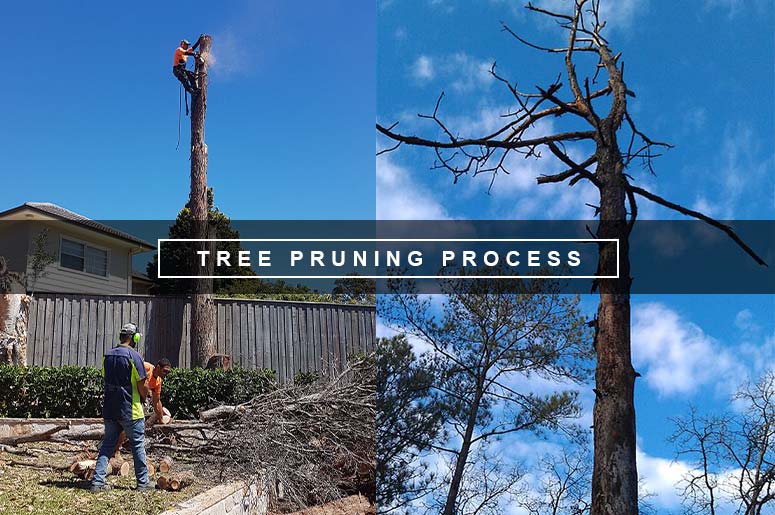As a homeowner, you are responsible for the care and maintenance of everything inside your property, including the trees growing in your yard. Trees are beneficial to you and the environment if given the care and attention they deserve. However, without regular maintenance practices, such as pruning, they can cause severe injuries and costly property damages. This is why you should never take the importance of pruning for granted. When your trees are pruned regularly, you can enjoy better air quality, prevent accidents, and improve the overall health and appearance of your surroundings.
Thinking about the amount of work you’ll need to do to prune your trees may be taxing, especially if it’s your first time. But, with sufficient knowledge and a guide to proper pruning, you’ll be able to accomplish the task easier and faster. Here, we will help you learn and understand the steps involved in the tree pruning process.
What Is Tree Pruning?
Before you start pruning trees, it’s important to first learn what it is all about. Pruning is the process of selectively removing diseased, damaged, dead, and non-productive branches of a tree. It is an integral part of proper tree care and maintenance that improves a tree’s structure, keeps them attractive, and helps them reach their full potential.
6 Important Steps for A Successful Tree Pruning Process
Many want to prune their trees, but don’t know the right steps to complete the job properly. Below are the steps you can follow to ensure a safe and streamlined tree pruning process.
1. Inspect Your Tree
The first thing you need to do before you start pruning is to check your tree. Watch out for signs that your tree needs to be pruned. If you see cracked, broken, or wild branches on your tree, it’s probably time to take out your pruners. Inspect your tree between fall and spring. This is the dormant season and also the best time to prune trees. Nevertheless, if a storm has just blown by your property or if you notice signs of weakness on your tree, you should prune your tree at once. You can also ask a professional arborist to check the health of your tree and perform the appropriate tree work if necessary.
2. Do Your Research
You cannot just start cutting away tree limbs without adequate knowledge on essential tree parts and correct methods to do it. Read up on useful information such as where to cut and how to do it correctly. Online articles like this will also serve as your guide to know the steps in properly completing the task. Speaking to a professional arborist will also help you get a better idea of the risks you could face and the proper solutions to apply.
3. Make A Plan
Plan how much of your tree you can cut and make sure you don’t remove more than 25% of your tree’s canopy. Identify which branches you have to cut and which ones you need to keep. Pick the branches that show signs of damage first or the areas that are too thick. You should also identify the parts which threaten to fall into utility lines, your roof, your car, or other structures and objects on your property. Avoid the removal of the major tree branches that make up its skeleton and never prune too much of your tree.
4. Gather The Right Tools
Having the right tools is crucial in pruning your trees. Some tools you can use are secateurs, loppers, long-reach pruners, and a chainsaw. Make sure they are clean and sharp. If you need to cut branches from a tall tree, you might also need a harness and a climbing rope. You should also remember to don protective gear such as a helmet, gloves, and other safety gear. However, it is not recommended for a novice to work on tall and large trees. It is better to leave the job to professionals to avoid getting into an accident. Experts are better equipped in handling heavier and more complicated tree work.
5. Start Pruning
Once you’ve carefully inspected your tree, made a plan, and prepared all your pruning tools, it’s time to start pruning. Put on your protective gear and start removing the damaged branches first. Then, start working on thicker areas until your tree looks healthier and more balanced. Remember to prune as little as possible and follow the three-cut method of pruning.
- Make an undercut on the branch a few inches away from the trunk. Cut only part of the way. This first cut is done to prevent bark tearing.
- Move away from the first cut, a little further out, and cut all the way through to eliminate the weight of the branch.
- The third cut will be on the outside edge of the branch-bark ridge. Cut through the branch to the outside edge of the collar on the underside of the branch.
6. Clean Your Tools And Clear The Area
When you’re satisfied and confident that your tree is no longer hazardous, you may start clearing the area. Remove all the fallen branches and other debris away from your yard and dispose of them properly. Then, clean your pruning tools and wipe them dry before keeping them in a safe location. Make sure to double-check if the entire area is clean and safe from any tripping hazards or dangerous tools.
Conclusion
The process of pruning trees can be a dangerous and laborious task. Without adequate knowledge and the correct tools, you could end up causing more harm to people, plants, and objects on your property. Make sure you are physically and mentally ready to face the tree pruning process or else call a certified arborist. They have the experience and expertise that makes them the most qualified people to do any type of tree work. Saving money is just not worth the risks if you are not prepared and confident to perform pruning on your own.
